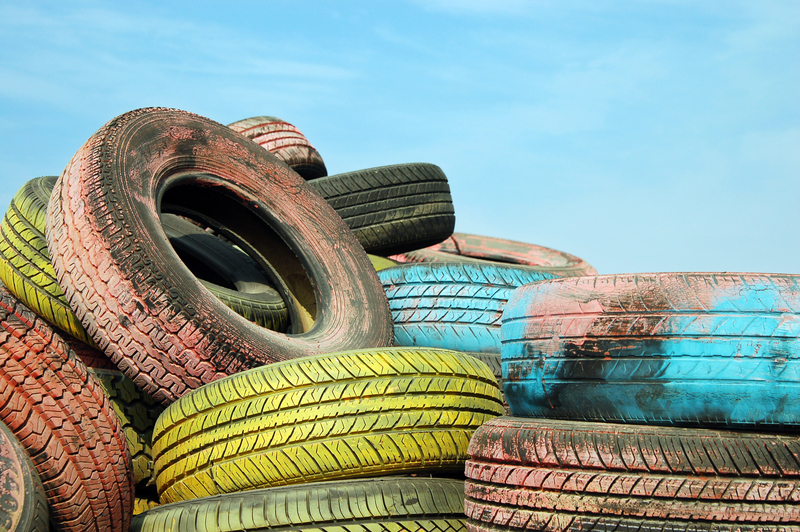Combating Microplastic Pollution
Posted on 19/09/2025
Combating Microplastic Pollution
Microplastic pollution is an escalating environmental issue that endangers both marine and terrestrial ecosystems. These tiny plastic particles, often less than 5 millimeters in size, originate from a variety of sources and pose significant threats to wildlife and human health. This article explores the origins of microplastics, their impacts, and actionable steps to combat this pervasive problem.
Understanding Microplastics
Microplastics are categorized into two main types: primary and secondary microplastics. Primary microplastics are intentionally manufactured small particles, such as microbeads used in cosmetics or industrial abrasives. Secondary microplastics result from the breakdown of larger plastic items like bottles, bags, and fishing nets due to environmental factors such as UV radiation and physical abrasion.
These particles are ubiquitous in the environment, having been detected in oceans, rivers, soil, and even air. The pervasiveness of microplastics makes it imperative to address their sources and mitigate their spread.

Sources of Microplastic Pollution
1. **Personal Care Products**: Many personal care products contain microbeads which are tiny plastic particles. Despite bans and regulations in some countries, these products still contribute significantly to microplastic pollution.
2. **Textiles**: Synthetic fibers from clothing are another major source of microplastics. Washing machines release millions of microfibers into wastewater systems with every wash cycle.
3. **Car Tires**: Tire wear is a lesser-known but vital source of microplastic pollution. Abrasion from tires contributes synthetic rubber and other plastic particles to the environment.
4. **Plastic Waste**: Improperly disposed plastic waste from households and industries breaks down into smaller fragments over time, adding to the problem.
Impacts of Microplastic Pollution
Microplastic pollution has far-reaching impacts on the environment and human health:
**Marine Life**: Microplastics are ingested by marine organisms, which can lead to physical harm, impaired feeding, and even death. They can also transfer up the food chain, ultimately reaching humans.
**Terrestrial Ecosystems**: Microplastics affect soil health by altering its properties and potentially harming organisms that contribute to soil productivity.
**Human Health**: As microplastics accumulate in seafood, drinking water, and even air, they pose potential risks to human health. These risks include exposure to toxic chemicals that are often associated with plastics.
Strategies to Combat Microplastic Pollution
Addressing microplastic pollution requires a multi-faceted approach involving regulations, technological advancements, and individual actions.
**Policy and Regulation**: Governments must enforce bans on microbeads in personal care products and regulate the manufacturing and disposal of plastics.
**Innovative Technologies**: Scientists and engineers are developing new materials and filtration systems to capture and degrade microplastics. Biodegradable plastics and washing machine filters are promising innovations.
**Public Awareness and Education**: Educating the public about the sources and effects of microplastic pollution can drive more responsible consumer behavior and waste management practices.
Tips to Reduce Microplastic Pollution
1. **Choose Natural Fibers**: Opt for clothing made from natural fibers like cotton, wool, and hemp instead of synthetic materials.
2. **Use Microplastic Filters**: Install microplastic filters in washing machines to capture synthetic fibers.
3. **Reduce Plastic Use**: Avoid single-use plastics and choose reusable alternatives like metal straws, cloth bags, and glass containers.
4. **Proper Disposal**: Dispose of plastics responsibly by recycling and supporting systems for effective waste management.
Pros and Cons of Combating Microplastic Pollution
**Pros**:
1. **Environmental Conservation**: Reducing microplastics protects marine and terrestrial ecosystems.
2. **Health Benefits**: Lower exposure to toxic chemicals associated with plastics can improve public health.
3. **Economic Gains**: Innovative solutions to tackle microplastics can create new markets and job opportunities.
**Cons**:
1. **Cost**: Implementing advanced filtration systems and biodegradable materials can be expensive.
2. **Behavioral Change**: Encouraging widespread behavioral change at a societal level can be challenging.
3. **Regulatory Hurdles**: Developing and enforcing regulations requires time, resources, and political will.

Key Takeaways
1. **Microplastics originate from various sources, including personal care products, textiles, and plastic waste**.
2. **They have detrimental effects on marine life, terrestrial ecosystems, and human health**.
3. **Combatting microplastic pollution requires a combination of policy, technology, and individual actions**.
4. **Public awareness and education play crucial roles in driving change**.
Conclusion
Combating microplastic pollution is a global imperative that demands immediate and sustained action. By understanding the sources and effects of microplastics, implementing policies and innovative solutions, and adopting responsible behaviors, we can significantly reduce the impact of microplastic pollution on our environment and health. It is not only feasible but crucial for the well-being of future generations that we take collective steps to mitigate this growing problem.

